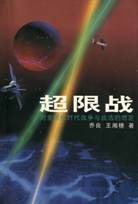Why So Surprised? CIA, U.S. Military Knew Chinese Hackers Expected Since 1999
The breathless reporting about the alleged Chinese hacking at The New York Times is truly annoying because of the shock it displays. The surprise any major government or private corporate entity shows at this point about any network-based security breach that appears to originate from China should be treated as propaganda, or a display of gross ignorance.
In 1999, the CIA’s Foreign Broadcast Information Service published a white paper entitled Unrestricted Warfare, written by the PRC’s Col. Qiao Liang and Col. Wang Xiansui. The publication outlined the methodologies a nation-state could deploy as part of an asymmetric war. Further, the same work outlined the U.S.’s weaknesses at that time were it to confront such asymmetric warfare. It did not focus any other nation-state, just the U.S.*
The colonels acknowledged that the U.S.—at the time of the paper—had considered using a range of tools in response to conflicts:
“…There’s no getting around the opinions of the Americans when it comes to discussing what means and methods will be used to fight future wars. This is not simply because the U.S. is the latest lord of the mountain in the world. It is more because the opinions of the Americans on this question really are superior compared to the prevailing opinions among the military people of other nations. The Americans have summed up the four main forms that warfighting will take in the future as: 1) Information warfare; 2) Precision warfare [see Endnote 8]; 3) Joint operations [see Endnote 9]; and 4) Military operations other than war (MOOTW) [see Endnote 10]. This last sentence is a mouthful. From this sentence alone we can see the highly imaginative, and yet highly practical, approach of the Americans, and we can also gain a sound understanding of the warfare of the future as seen through the eyes of the Americans. Aside from joint operations, which evolved from traditional cooperative operations and coordinated operations, and even Air- Land operations, the other three of the four forms of warfighting can all be considered products of new military thinking. General Gordon R. Sullivan, the former Chief of Staff of the U.S. Army, maintained that information warfare will be the basic form of warfighting in future warfare. For this reason, he set up the best digitized force in the U.S. military, and in the world. Moreover, he proposed the concept of precision warfare, based on the perception that “there will be an overall swing towards information processing and stealthy long-range attacks as the main foundations of future warfare.” For the Americans, the advent of new, high-tech weaponry, such as precision-guided weapons, the Global Positioning System (GPS), C4I systems and stealth airplanes, will possibly allow soldiers to dispense with the nightmare of attrition warfare. …”
The rise of military tools like drones for precision-guided stealth attacks was predicted; quite honestly, the PRC’s current cyber warfare could be a pointed response to Gen. Sullivan’s statement about information warfare.
But in acknowledging the U.S.’s future use of MOOTW, the colonels also offered up the most likely approaches in an asymmetric assault or response: trade war, financial war, new terror war in contrast to traditional terror war, ecological war. Of these, they cited a specific example of new terror war entity and attacks: Read more →

